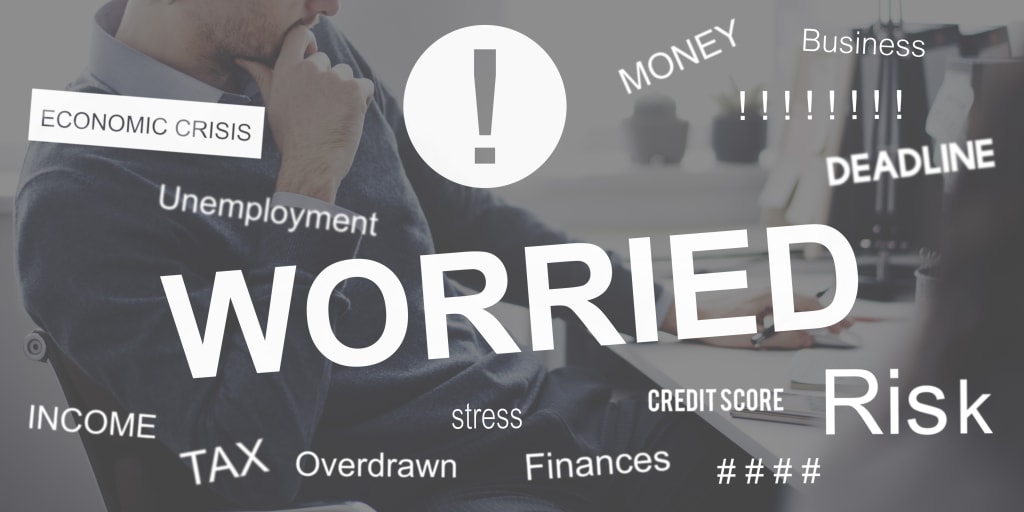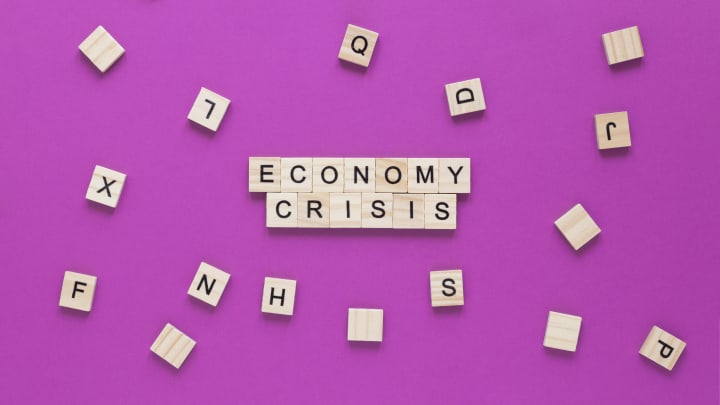Indian economic crisis
Indian economy is the 5th largest in the world by nominal GDP and the 3rd largest by purchasing party

The Indian economy has been facing a crisis in recent years, characterized by high inflation, slow GDP growth, and a widening current account deficit. The crisis has been attributed to a variety of factors, including structural issues within the economy, global economic factors, and poor policy decisions by the Indian government. Some of the key issues that have contributed to the crisis include:
1. High levels of government debt and budget deficits
2. A large trade deficit and a widening current account deficit
3. High inflation and rising food and fuel prices
4. Slow GDP growth and a lack of job creation
5. A banking crisis caused by high levels of non-performing assets
6. Lack of structural reforms in key sectors such as agriculture, labor and land
7. Inadequate investment in infrastructure
8. High levels of corruption and bureaucratic inefficiencies

1. High levels of government debt and budget deficits:
India has one of the highest levels of government debt as a percentage of GDP among major emerging economies. The government has been running large budget deficits in recent years, which has contributed to the accumulation of debt. This has put pressure on the country's fiscal position and has limited the government's ability to respond to economic shocks. High levels of government debt can also lead to higher interest rates, which can further slow economic growth and make it more difficult for businesses and individuals to access credit. Additionally, a high debt-to-GDP ratio can also make it difficult for a country to borrow money on international markets and can increase the risk of a sovereign debt crisis.
2. A large trade deficit and a widening current account deficit
India has been running a large trade deficit for many years, meaning that it imports more goods than it exports. This trade deficit is driven by a number of factors, including high oil prices, a large import bill for gold, and a lack of competitiveness in key export sectors. A large trade deficit can put pressure on the country's currency and can make it more difficult for the country to finance its debt. Additionally, India's current account deficit, which is the difference between a country's total imports and exports of goods, services, and transfer payments, has been widening in recent years. A widening current account deficit can also put pressure on the currency and can increase the risk of a balance of payment crisis.
3. High inflation and rising food and fuel prices
India has been facing high inflation in recent years, driven in large part by rising food and fuel prices. High inflation can erode people's purchasing power, making it more difficult for them to afford basic goods and services. This can have a particularly severe impact on low-income households, who spend a larger share of their income on food and fuel. High inflation can also make it more difficult for businesses to plan for the future and can make it more expensive for people and businesses to borrow money. Additionally, rising food and fuel prices can also lead to social and political unrest. The Reserve Bank of India (RBI) the central bank of India, uses monetary policy tools to control inflation but it's been a challenging task for the central bank in recent years due to structural and external factors.
4. Slow GDP growth and a lack of job creation
India's GDP growth rate has been slowing down in recent years, and has been below the levels seen in the past decade. The main reasons for the slowdown include weak investments, slow credit growth, and lack of demand. A slow growth in GDP can lead to a lack of job creation, which can have a significant impact on the overall economic situation of the country. High unemployment and underemployment can lead to a lack of consumer spending and can further slow economic growth. Additionally, slow GDP growth and a lack of job creation can lead to social and political unrest, and can disproportionately affect young people and vulnerable groups. The government has been trying to boost the economy through various policy measures like infrastructure development, ease of doing business and encouraging foreign investment but the results have been mixed.
5. A banking crisis caused by high levels of non-performing assets
India's banking sector has been facing a crisis in recent years due to high levels of non-performing assets (NPAs). NPAs are loans that have gone bad and are unlikely to be repaid. Banks in India have been struggling with high levels of NPAs, particularly in the public sector banks, which account for a large share of the country's banking sector. High levels of NPAs can lead to a lack of liquidity in the banking system, which can make it more difficult for banks to lend money and can slow economic growth. Additionally, high levels of NPAs can also lead to a lack of confidence in the banking system, which can further worsen the situation. The government has been taking various steps to resolve this issue like creating a central repository of large loan information, creating a framework for resolution of stressed assets and infusing capital into public sector banks but the problem still persists.
6. Lack of structural reforms in key sectors such as agriculture, labor and land
India's economy has been facing structural issues in key sectors such as agriculture, labor and land that have prevented it from reaching its full potential. The agriculture sector, which employs a large percentage of India's population, has been facing a number of issues such as low productivity, lack of access to credit and technology, and poor infrastructure. The labor market in India is also facing structural issues such as rigid labor laws, a lack of social security for workers, and low wages. The land market in India has also been facing issues such as lack of transparency, and the lack of a clear and efficient land acquisition process, which makes it difficult for businesses to acquire land for infrastructure and industrial development. The lack of reforms in these key sectors has prevented the economy from reaching its full potential and has been a major roadblock to economic growth.
7. Inadequate investment in infrastructure
India's economy has been facing a significant infrastructure deficit, which has been a major constraint on economic growth. The country's infrastructure, including transportation, energy, and telecommunications, is inadequate and in poor condition, which makes it difficult for businesses to operate and for people to access goods and services. This inadequate infrastructure also increases the cost of doing business and makes it difficult for India to attract foreign investment. Additionally, inadequate infrastructure can also lead to bottlenecks in the supply chain and can limit the ability of businesses to expand and create jobs. The government has been trying to address this issue by increasing investment in infrastructure development through various policy measures such as the National Infrastructure Pipeline (NIP) and the Bharatmala Pariyojana but the progress has been slow.
8. High levels of corruption and bureaucratic inefficiencies
India's economy has been facing significant challenges due to high levels of corruption and bureaucratic inefficiencies. High levels of corruption can lead to a lack of trust in government and institutions, which can make it more difficult for businesses to operate and for people to access goods and services. Additionally, corruption can also lead to a lack of transparency and accountability, which can further worsen the situation. Bureaucratic inefficiencies can also make it more difficult for businesses to operate and for people to access goods and services. This can include delays in processing paperwork, complicated regulations, and lack of coordination between different government agencies. These inefficiencies can also lead to an increase in the cost of doing business and can make it more difficult for India to attract foreign investment. The government has been taking steps to tackle corruption and bureaucratic inefficiencies by enacting laws like The Lokpal and Lokayuktas Act, 2013 and simplifying the procedures but the results have been mixed.
The Indian government has taken a number of measures to address the crisis, including monetary policy measures, fiscal stimulus packages, and structural reforms. However, the effectiveness of these measures remains a topic of debate. The ongoing COVID-19 pandemic has further exacerbated the crisis, leading to widespread job losses and a sharp decline in economic activity.
About the Creator
Enjoyed the story? Support the Creator.
Subscribe for free to receive all their stories in your feed. You could also pledge your support or give them a one-off tip, letting them know you appreciate their work.





Comments
There are no comments for this story
Be the first to respond and start the conversation.